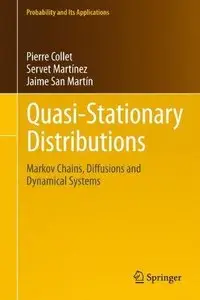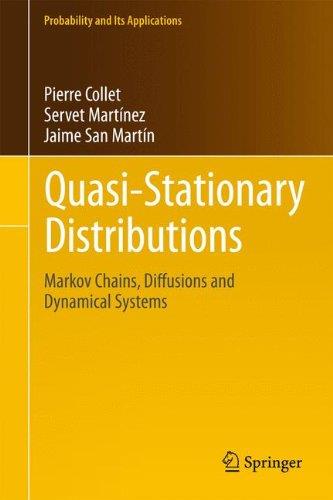Quasi-Stationary Distributions: Markov Chains, Diffusions and Dynamical Systems (Probability and Its Applications) By Pierre Collet, Servet Martínez, Jaime San Martín
2013 | 287 Pages | ISBN: 3642331300 | PDF | 3 MB
2013 | 287 Pages | ISBN: 3642331300 | PDF | 3 MB
Main concepts of quasi-stationary distributions (QSDs) for killed processes are the focus of the present volume. For diffusions, the killing is at the boundary and for dynamical systems there is a trap. The authors present the QSDs as the ones that allow describing the long-term behavior conditioned to not being killed. Studies in this research area started with Kolmogorov and Yaglom and in the last few decades have received a great deal of attention. The authors provide the exponential distribution property of the killing time for QSDs, present the more general result on their existence and study the process of trajectories that survive forever. For birth-and-death chains and diffusions, the existence of a single or a continuum of QSDs is described. They study the convergence to the extremal QSD and give the classification of the survival process. In this monograph, the authors discuss Gibbs QSDs for symbolic systems and absolutely continuous QSDs for repellers. The findings described are relevant to researchers in the fields of Markov chains, diffusions, potential theory, dynamical systems, and in areas where extinction is a central concept. The theory is illustrated with numerous examples. The volume uniquely presents the distribution behavior of individuals who survive in a decaying population for a very long time. It also provides the background for applications in mathematical ecology, statistical physics, computer sciences, and economics.



